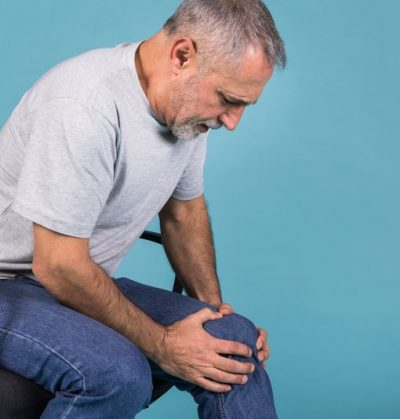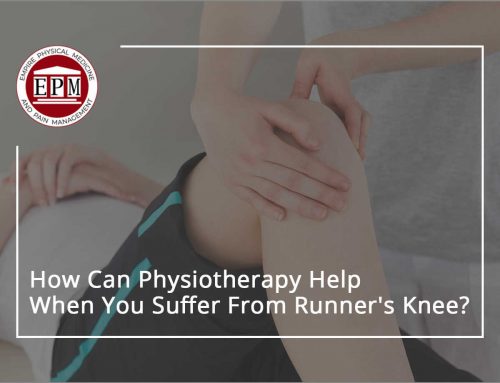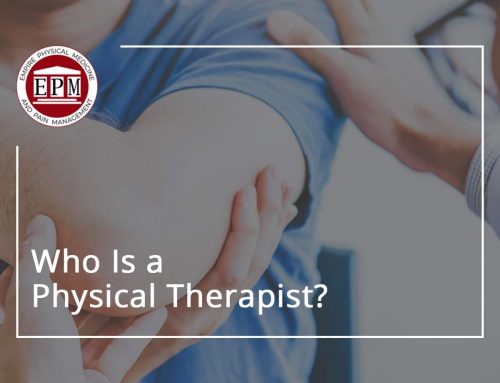 It is estimated that 4 out of every 10 Americans will be afflicted with sciatica at some point in their lives. If you’ve ever dealt with sciatic nerve pain, you know how excruciating it can be. It can make every-day tasks such as walking and sitting very painful. For many, it can be very prohibitive and debilitating. The pain can even deter you from being active or completing simple tasks such as getting up from the couch or your bed.
It is estimated that 4 out of every 10 Americans will be afflicted with sciatica at some point in their lives. If you’ve ever dealt with sciatic nerve pain, you know how excruciating it can be. It can make every-day tasks such as walking and sitting very painful. For many, it can be very prohibitive and debilitating. The pain can even deter you from being active or completing simple tasks such as getting up from the couch or your bed.
You may wake up one day and find yourself with sciatic pain. No matter which position you are in, whether you’re sitting, walking, or even laying down, you can find yourself in discomfort. If you have a desk job, you will find that your pain often intensifies after extended periods of sitting. While it can be very uncomfortable, sciatica usually isn’t life threatening. If you or anyone you know is dealing with sciatica, follow these tips below to alleviate your aches.
What is sciatica exactly?
Sciatic pain occurs when there is an impingement or compression on the sciatic nerve, which runs from the lower back down to your feet. If the nerve becomes irritated, it triggers a shooting pain down your leg. Typically, sciatica will affect one leg and can create a tingly sensation or a feeling of weakness in addition to radiating pains. The root cause of sciatica is usually due to lower back and hip issues – for example, if you have tight hip muscles, you could develop sciatica. There are a wide variety of conditions, however, that can cause sciatic pain. It can be triggered by a herniated, ruptured or slipped disc or even muscle imbalances. Sciatica can also arise after an injury, a narrowing of the spinal canal or pregnancy due to the increased pressure on the lumbar spine. You could also develop sciatica if you have tight hip muscles.
How Do You Treat Sciatica?
If you’re living with sciatica, don’t stress. For most, sciatica can be treated with conservative measures over a few short weeks. Our musculoskeletal experts will help you get back to your normal lifestyle and get you moving again pain-free. Our physical therapists will work with you on prescribed and supervised exercises that will strengthen your core muscles and lower back and take the pressure off the sciatic nerve.
To relieve your aches, the goal is to alleviate the pressure off the sciatic nerve. Stretches that rotate the hip externally to open them up will help, including different variations of pigeon pose (if you do yoga, you’re probably very familiar with this). In addition to doing physical therapy in our office, try these tips and stretches for relief:
Water Therapy
Water exercise programs can be very useful for those suffering from sciatica. When you’re in the water, you essentially become weightless due to the water’s natural buoyancy. This helps alleviate pain and discomfort throughout the body and in the lower back. You will find it is easier to move your lower extremities while they are underwater. As an added benefit, the water provides a natural force of resistance so any exercises you do in the water will go further in helping you build up your muscles and strength.
Remain Active
Get up and move. contrary to one’s belief, staying sedentary makes the pain worse. When you sit, you’re placing pressure on the sciatic nerve. Doing exercises and activities such as stretching or water therapy can help ease the pain. It is important that you do exercises that are prescribed to you or consult your medical professional before attempting any exercise as some can cause more harm than good. For example, you will want to avoid any exercises which stretch the hamstrings or the back of the legs as it can irritate your condition.
Sitting Pigeon Pose
For this stretch, you will want to sit on the floor with your legs straight out in front of you. Bend your right knee over your left leg and lean forward with your hands and hold onto your toes. Hold this for ten seconds. Do the same on the alternate side with your left knee over your right leg. Stretch gently and do not push yourself so as to avoid any further injury.
Forward Pigeon Pose
You will basically want to act like you are laying flat on your stomach. The only variation is that you will have one knee bent at a time. Start off on all fours. Then elongate your left leg so that it is straight. With your right leg, you will want to bend it across towards your left leg but in a way that your hips can drop all the way to the ground. By now, your hip should be to the ground, your left leg should be straight out behind you and your right leg and knee should be bent towards your left leg. Lower your upper body as if you are doing a push up while keeping the same position as previously mentioned with your lower body and hold as much of your body weight with your arms. Do this stretch when you first wake up and before going to bed every day.
Knees to Chest Stretch
If your sciatica stems from bone degeneration, this stretch should do the trick. While on your back, hug your knees to your chest and hold them there for 30 seconds. To open up your hips and loosen its muscles, you could do a different variation of this stretch. First, lie flat on your back. Instead of having both knees to your chest, do one at a time. If you have your right knee to your chest, pull it toward your left shoulder and clasp your hands behind your knee to hold this pose for 30 seconds. When done, alternate and hold your leg knee to your chest and pull it towards your right shoulder.
Foam roll
You can break up the muscle tightness in your lower back and legs with a foam roller. You will want to foam roll your piriformis, the small muscle in your hip which lies on top of your sciatic nerve. You can also easily target and relieve any muscle tightness that you feel on your own.
Medical Massage
Medical massage therapy and trigger point therapy can be very useful in relieving the aches associated with sciatica. The sciatic nerve lies underneath the piriformis muscle which is under the glutes. By applying pressure and working on this inflamed area, massage therapy enables you to work on the source of pain.
Published By:
Empire Physical Medicine & Pain Management
7 W 45th St floor 9,
New York, NY 10036
Phone: (646) 665-7109
Website: https://manhattanpainrelief.com





